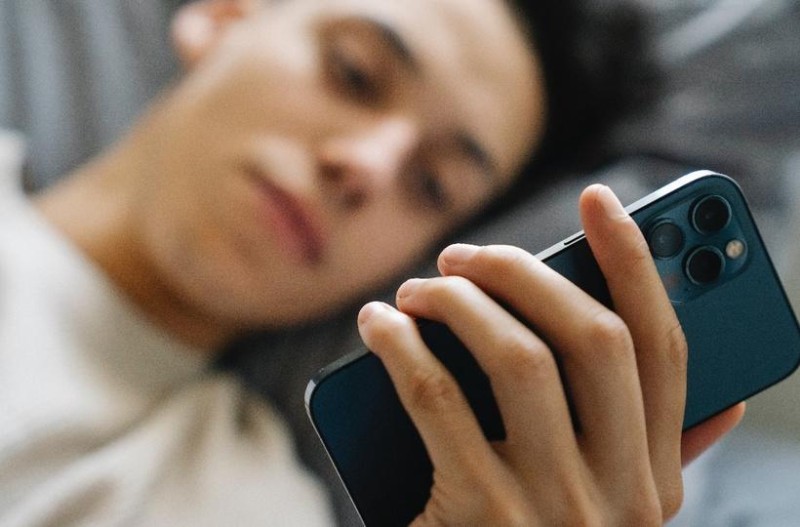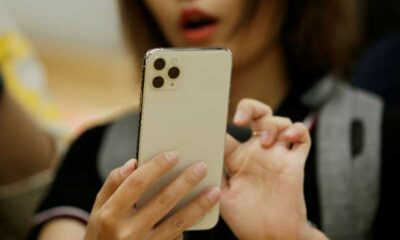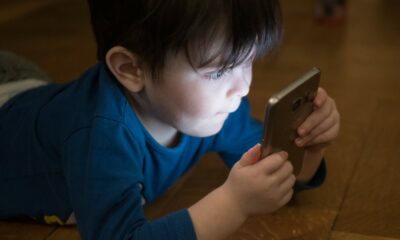China-based researchers looked into the effects of smartphone addiction on creativity. They measured cortical responses to creative tasks with brain imaging technology. The findings suggest that the capacity for creativity in the brain is negatively impacted by smartphone addiction. When asked to think creatively, the prefrontal cortex and temporal areas of the brain were less active. Participants who did not have a smartphone addiction were the opposite.
The study was published in the journal Social, Cognitive, and Affective Neuroscience.
The global pandemic and subsequent isolation led to an increase in the number of smartphone addicts. People who were addicted to smartphones were found to be less creative than those who were not. Xinyi Li and her colleagues wanted to know which parts of the brain were to blame for this decline in creativity.
Shaanxi Normal University students aged 18 to 25 participated in the study. The Smartphone Addiction Scale (SAS) was used in the identification of the 48 participants. Twenty-four of the participants qualified for the experimental group with high SAS scores. The remaining 24 were in the control condition and had low SAS scores. There were no other behavioral addictions or medications in the group that could affect the nervous system.
The Alternative Uses Task was to be used by the research team to measure creativity. In this test, participants are given a common object and 30 seconds to think of as many different uses for it as possible. The first phase of the test consisted of a collection of items and the top two uses for each. These lists were to be sung aloud and memorized by participants.
Neuroimaging was used in the second phase to see what participants’ brains were doing while they were responding to the Alternative Uses Task. Some of the items used in the Alternative Uses Task were also used in phase one for half of the participants. As a result, they had already been instructed to recall the object’s most common uses.
The research team referred to the “constrained condition” as the group of participants who had creatively considered the objects they had seen earlier in the experiment. The “unconstrained condition” was experienced by those who were asked to consider all new objects. Participants in the experimental and control groups were both constrained and unconstrained. The Alternative Uses Task’s difficulty was increased by these two conditions; Participants who had previously been exposed to the item’s intended use would have a harder time coming up with alternative uses.
Researchers looked at the results of the Alternative Uses Task and found that people who were addicted to their smartphones scored lower in fluency, flexibility, and originality. Both the restricted and unrestricted conditions showed this to be the case. The imaging showed that people with smartphone addiction had less activity in the prefrontal cortex and temporal areas of the brain.
The researchers concluded, “by manipulating the semantic constraints, we found that the smartphone addiction individuals exhibited reduced cortical activations and functional connectivities in the prefrontal cortex and temporal cortex, making it difficult to overcome semantic constraints and establish original associations during creative idea generation.”
The research team acknowledged that their study had some limitations. They failed to distinguish between various types of smartphone addiction. It’s possible that people only play games on their phones or on social media. These distinctions could have ramifications for imagination and mind capability. Furthermore, the study only looked at one aspect of creativity. Understanding critical thinking, for instance, was not evaluated.
The researchers believe that their study is an important addition to our understanding of how smartphone addiction may affect cognition despite these limitations.
The study, “Reduced brain activity and functional connectivity during creative idea generation in individuals with smartphone addiction“, was authored by Xinyi Li, Yadan Li, Xuewei Wang, and Weiping Hu.

 Diabetology1 week ago
Diabetology1 week ago
 Diabetology4 days ago
Diabetology4 days ago
 Diabetology7 hours ago
Diabetology7 hours ago
 Diabetology7 hours ago
Diabetology7 hours ago













